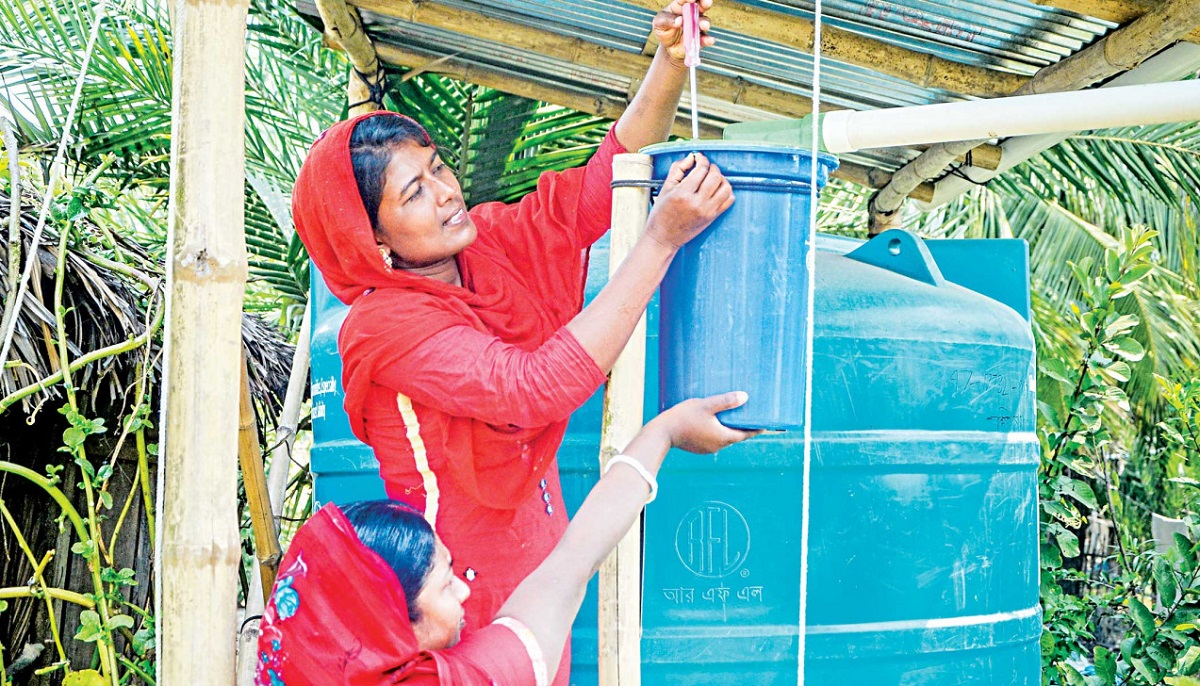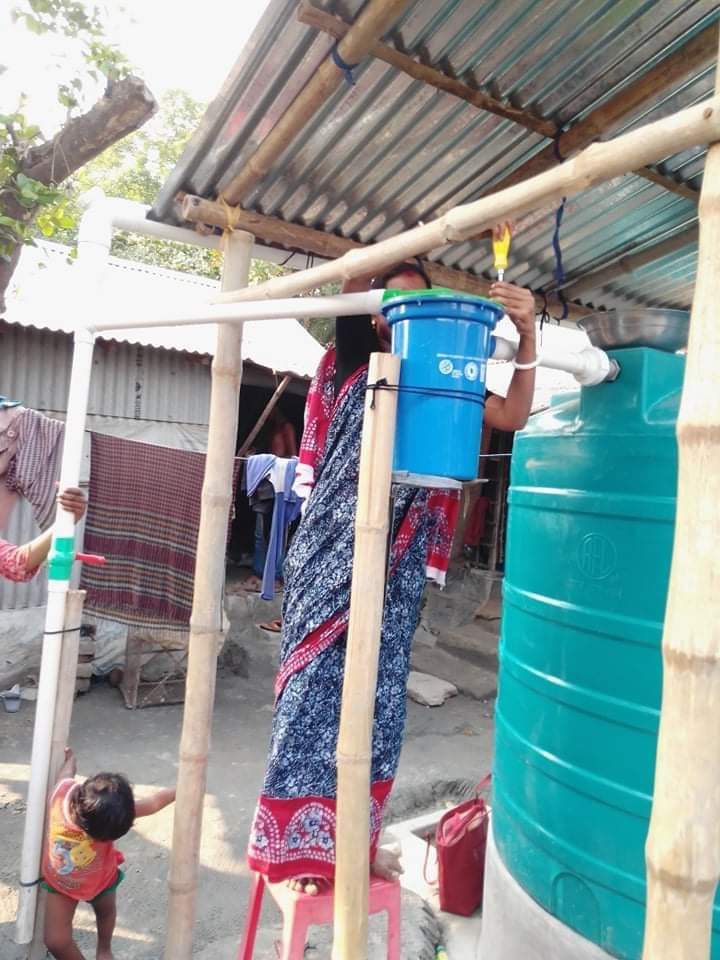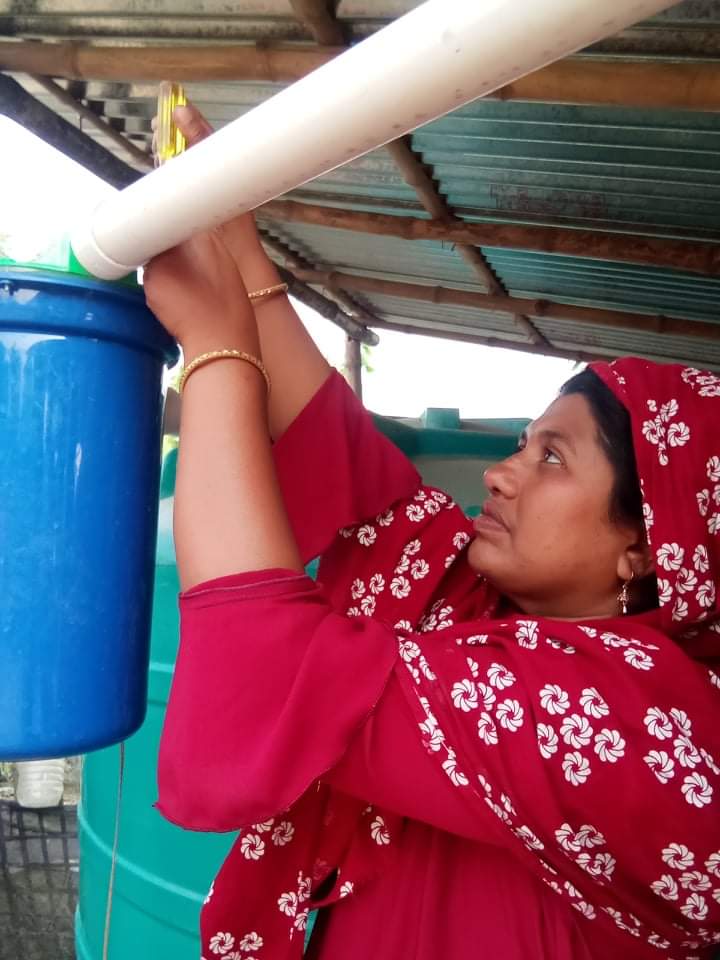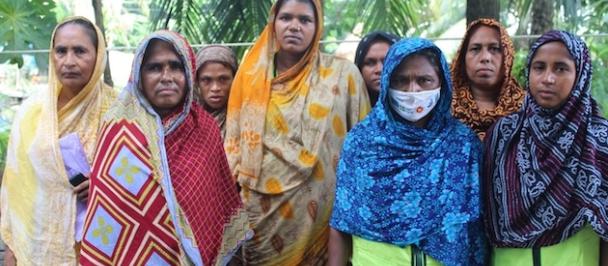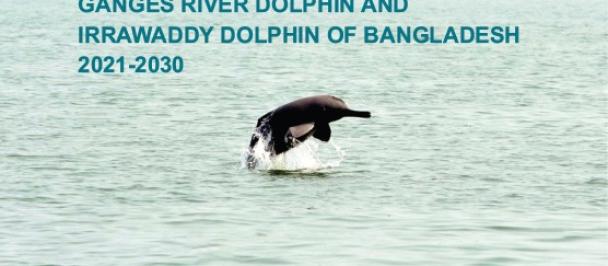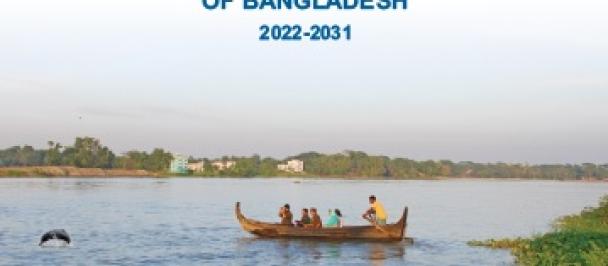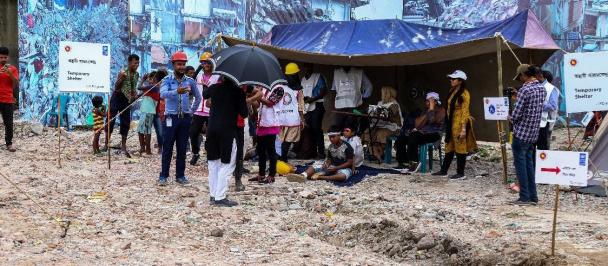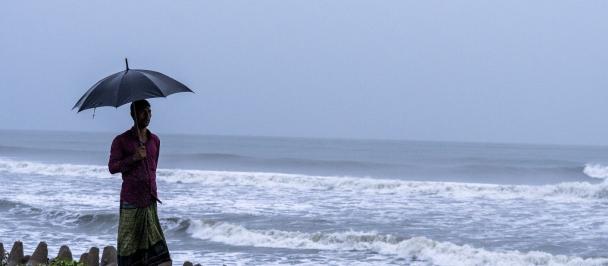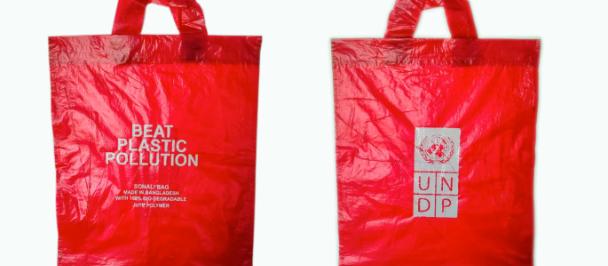Raushan Ara Akhter (32), locally known as “Paani Apa”, has been working as a one-woman army in the battle against the water crisis in Gunari village of Khulna’s Dakop upazila. She goes door-to-door, fixing the water tank pipelines in every house to install rainwater harvesting systems and clean the filter
The Story was first published in The Daily Star Click here to read the original publication.
Mitu Sana, a homemaker from Gunari village at Khulna's Dakop upazila, has to go to the Union Parishad pond -- far from her home -- to fetch drinking water. |
All the families have my contact number. They can call me if they face any issue with the rainwater tank. I go immediately to fix it. Raushan Ara |
Mitu's husband and her brother-in-law are both day labourers, and her father-in-law is too old for the job. So the responsibility falls on her shoulders, like every other woman of the region.
"It takes one and a half hours to fetch water from the pond. I need to make the trip twice a day," said Mita.
In the southwestern region of the country, the water crisis during the dry season is a battle that every woman has to fight. Women of every household have to walk for hours to fetch water from sources far from their homes.
Rainwater, during this season, is the only viable source that can solve the crisis.
Raushan Ara Akhter (32), locally known as "Paani Apa", has been working on that front. She has got training to install rainwater harvesting systems and fix technical issues related to them.
Raushan goes door-to-door, fixing the water tank pipelines of every house and cleaning the filters.
"We need to prepare all the water tanks to contain rainwater. I have to complete the work in every household in Gunari village before the monsoon," said a determined Raushan.
A recent UNDP survey reveals that 73 percent of the people living in five coastal upazilas -- Koyra, Dakop, Paikgachha of Khulna and Assasuni and Shyamnagar of Satkhira -- drink unsafe saline water.
The survey was carried out on 2,71,464 people of 66,234 households living in 39 unions of the five coastal upazilas, under a project titled "Gender-responsive Coastal Adaptation (GCA)".
Though the permissible salinity level in drinking water is 1,000 mg per litre, residents of the coastal areas consume water with a salinity level between 1,427 mg and 2,406 mg per litre on average, reveals the survey.
During the dry season, the salinity level of tube well water in Shyamnagar goes up to 6,600 mg per litre, more than six times the permissible limit.
Almost all freshwater sources were destroyed in the 2009 cyclone "Aila". All drinkable resources were damaged and ponds were filled with saline water.
According to the DPHE in Dakop, 1,53,000 people in the upazila have no access to a deep tube well.
Sources in the DPHE said there were some 46 government ponds in the upazila. However, due to lack of maintenance, many of these have dried up.
Under the UNDP project, each family was given a 2,000-litre water tank to contain rainwater in an attempt to solve their drinking water crisis for several months.
"But many people do not know how to manage the filter properly. So I was given training on how to properly install and clean it, to ensure a steady supply of safe drinking water," said Raushan.
Mitu Sana added, "I am eagerly waiting for the rainy season. It will solve this huge crisis for us."
And Paani Apa is there to the rescue.
"All the families have my contact number. They can call me if they face any issue with the rainwater tank. I go immediately to fix it," said Raushan.
Raushan Ara Akhter is currently working with 88 families, and will soon start with 26 more.

 Locations
Locations